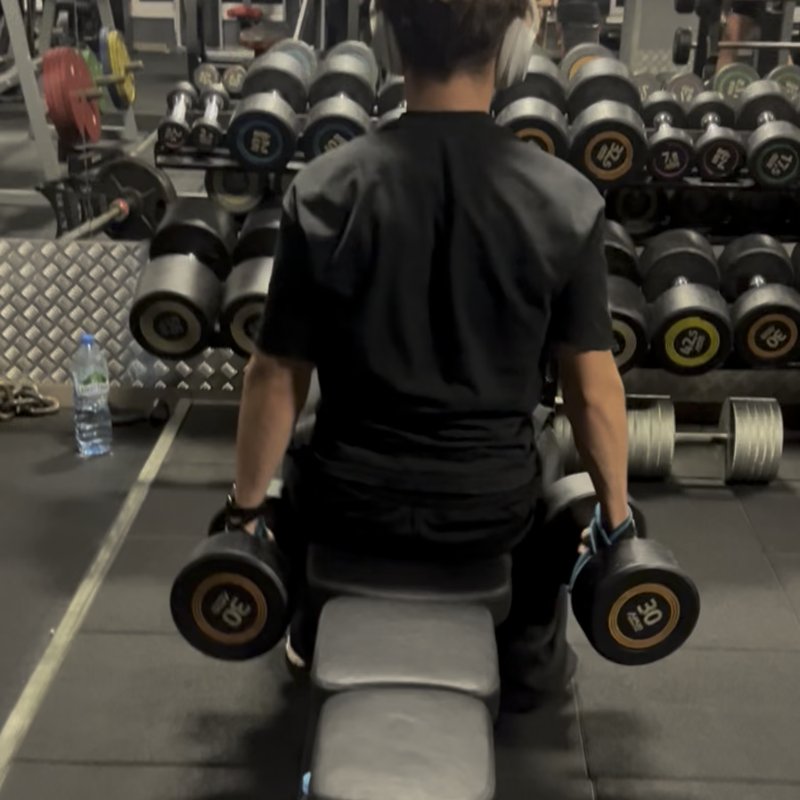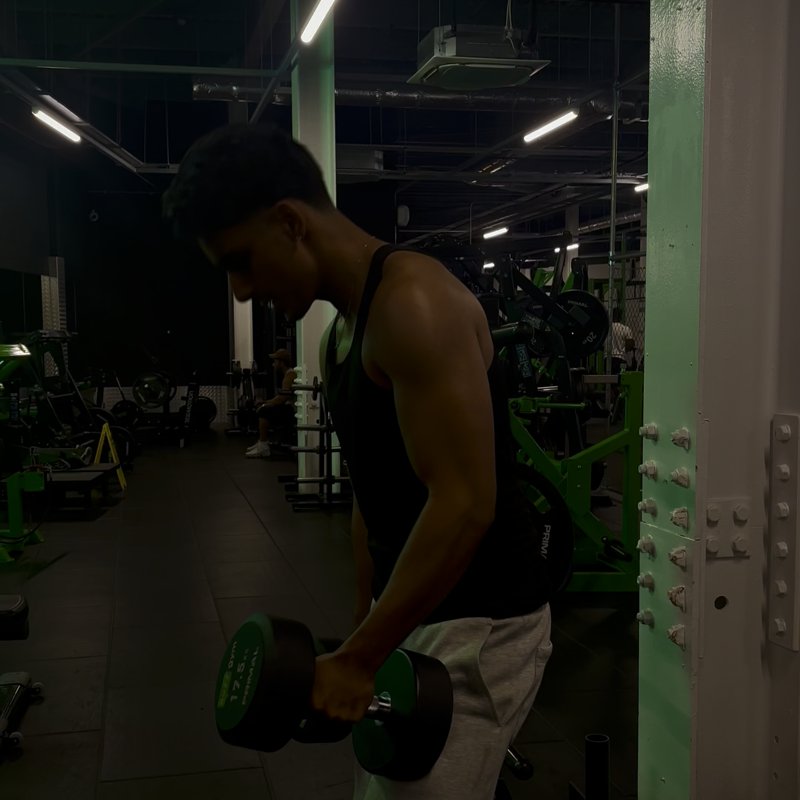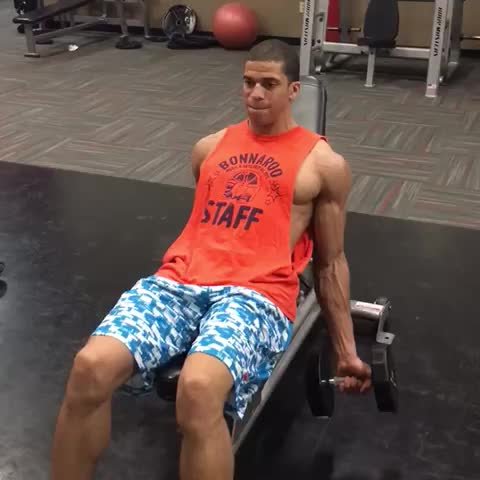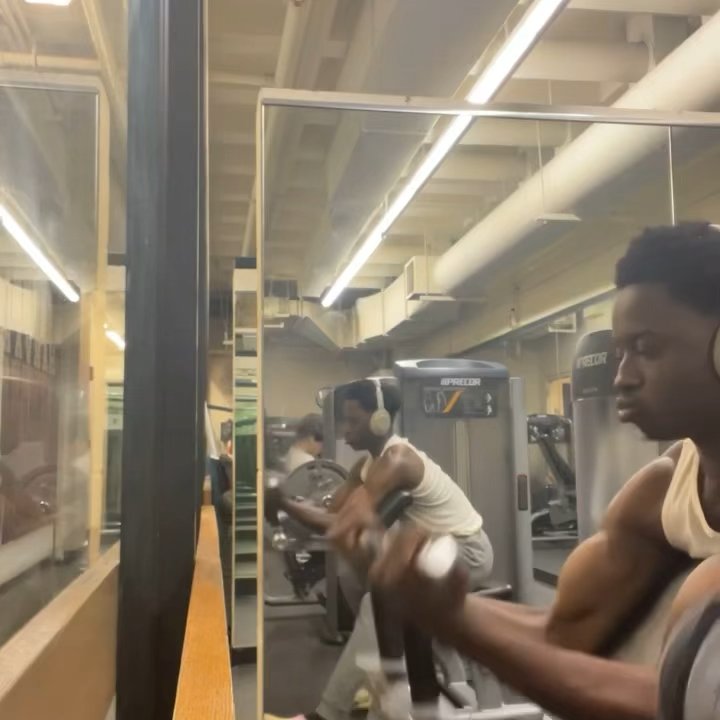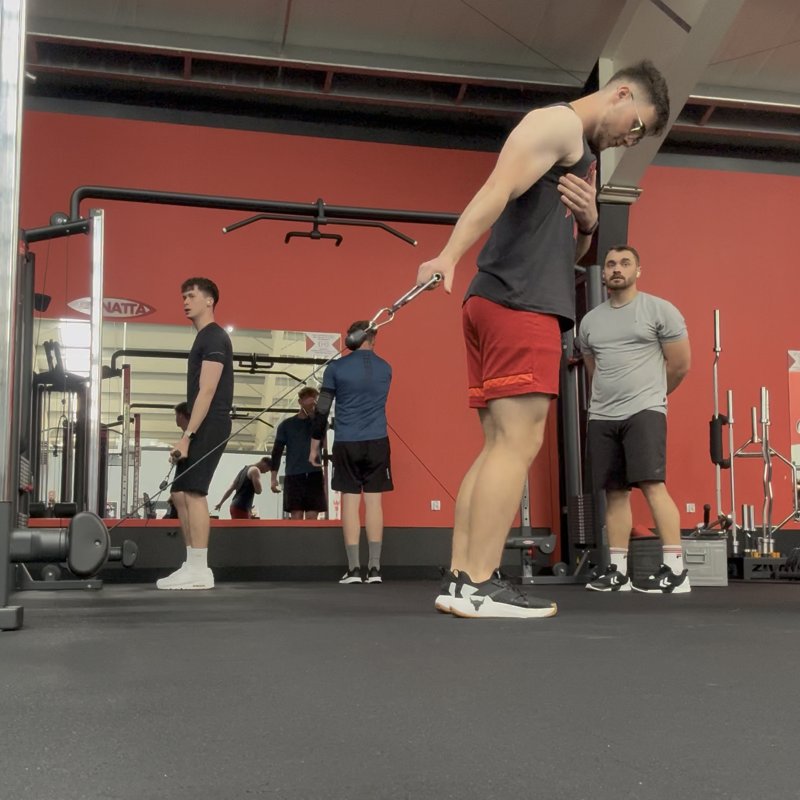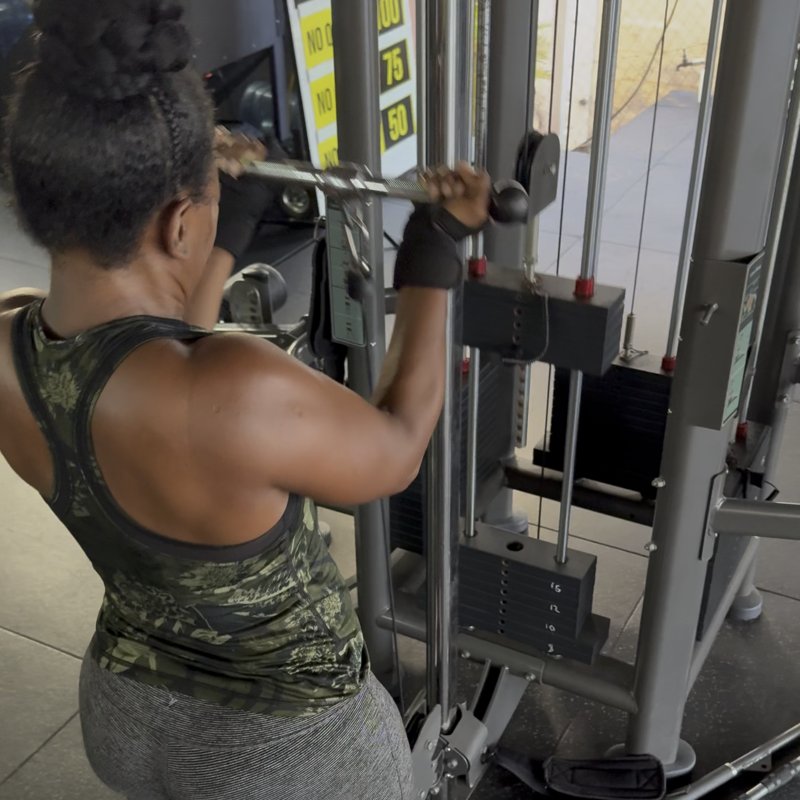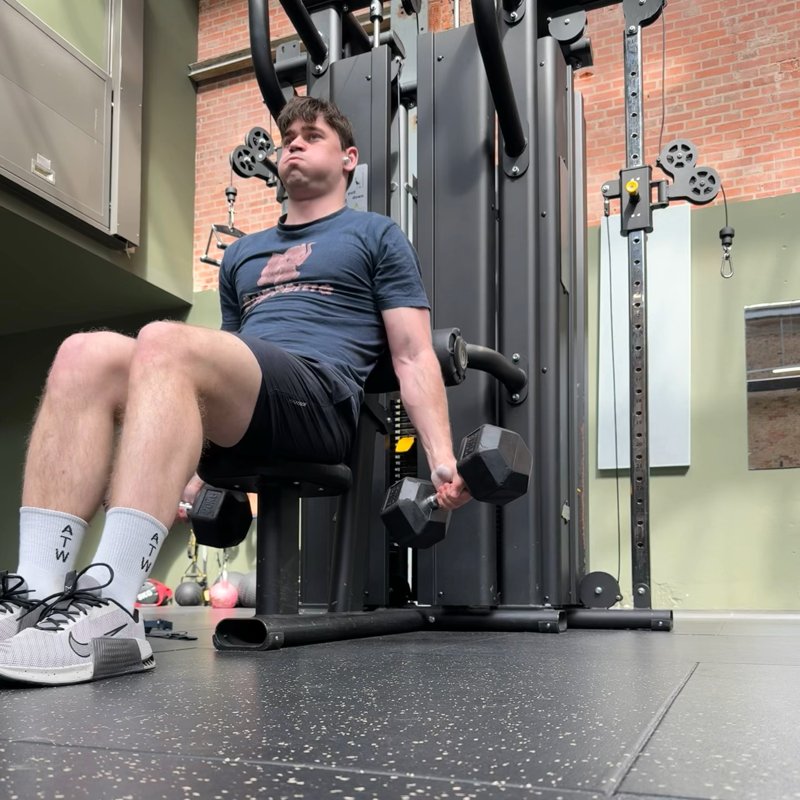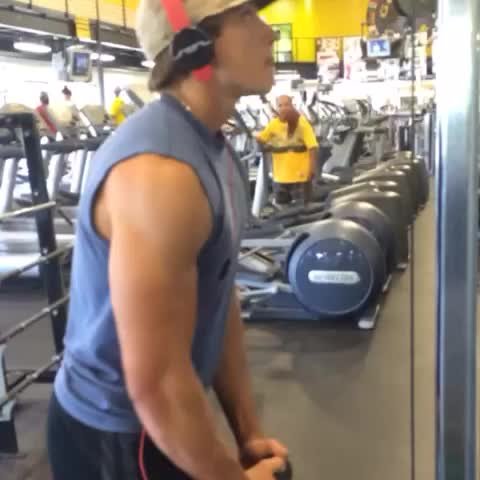Hammer Curl: The Ultimate Guide
The hammer curl is a valuable bicep variation that emphasizes the brachialis and forearm muscles. This guide covers proper technique, variations, and programming strategies for maximizing arm development and forearm strength.

Quick Facts
Key Benefit
Develops the brachialis and forearm muscles for thicker-looking arms and improved grip strength
Primary Muscles
Biceps, Brachialis
Secondary Muscles
Anterior Deltoids, Forearms, Traps
Equipment
Dumbbells
Difficulty
Beginner
Type
Isolation, Hypertrophy
In This Guide
Ready to master the Hammer Curl?
Track your progress, see improvements over time, and build strength consistently.
Download GravitusThe Hammer Curl is a highly effective variation of the traditional bicep curl that offers unique benefits for overall arm development. Named for the hammer-like grip position (neutral grip with palms facing each other), this exercise shifts emphasis from the biceps brachii to the brachialis and brachioradialis muscles, leading to greater arm thickness and forearm development. While standard curls with a supinated grip (palms up) primarily target the biceps brachii, the neutral grip used in hammer curls reduces biceps involvement and increases activation of the brachialis—a muscle that lies beneath the biceps and contributes significantly to arm thickness when developed. Additionally, this grip heavily engages the brachioradialis, one of the primary forearm muscles, making hammer curls excellent for building forearm size and strength. Beyond aesthetic benefits, hammer curls strengthen the muscles and connective tissues involved in daily activities that require a neutral grip, such as carrying groceries, turning doorknobs, or using tools. They also contribute to improved grip strength, which carries over to nearly every pulling exercise in your training program. Whether you're looking to add dimension to your arm development, improve functional strength, or simply add variety to your training, the hammer curl deserves a place in your exercise arsenal. This comprehensive guide covers proper technique, common mistakes to avoid, effective variations, and programming strategies to help you maximize your results with this versatile exercise.
Why the Hammer Curl Is Worth Mastering
The hammer curl offers several distinct advantages over traditional bicep curls and should be included in a well-rounded arm training program:
Complete Arm Development
Targets the often-neglected brachialis and brachioradialis muscles, which are crucial for creating arm thickness and a three-dimensional appearance.
Wrist and Elbow Health
The neutral grip position places less stress on the wrist and elbow joints compared to supinated (palms-up) curls, making it an excellent option for those with joint discomfort.
Functional Strength Carryover
Strengthens the muscles used in neutral-grip activities encountered in daily life and sports, improving real-world performance and grip strength.
Proper Hammer Curl Form: Step-by-Step
Starting Position
- Stand with feet shoulder-width apart, maintaining good posture with chest up and shoulders back.
- Hold a dumbbell in each hand with arms fully extended at your sides.
- Use a neutral grip (palms facing each other like holding hammers) with thumbs pointing forward.
- Keep elbows close to your sides and locked in this position throughout the movement.
- Engage your core slightly to maintain stability and prevent swaying.
The Movement
- Keeping your upper arms stationary against your sides, exhale as you curl the weights upward by flexing at the elbow.
- Maintain the neutral grip position throughout the movement (palms continue facing each other).
- Curl the dumbbells up until they reach shoulder height, with forearms roughly parallel to the floor.
- Focus on squeezing the brachialis and forearm muscles at the top of the movement.
- Hold the contracted position briefly for 1-2 seconds.
- Inhale as you slowly lower the weights back to the starting position with control, fully extending your arms without locking the elbows.
- Repeat for the desired number of repetitions, maintaining strict form throughout the set.
Key Form Tips
Elbow Position
Keep elbows pinned to your sides throughout the movement to maximize arm isolation.
Grip Consistency
Maintain the neutral grip (palms facing each other) through the entire range of motion.
Controlled Movement
Avoid using momentum or "swinging" the weights up; focus on muscular contraction.
Full Range of Motion
Allow complete extension at the bottom (without locking elbows) and full flexion at the top.
Wrist Position
Keep wrists straight and neutral; don't allow them to bend up or down during the curl.
Tempo
Consider using a slower eccentric (lowering) phase of 2-3 seconds to increase time under tension.
Muscles Worked in the Hammer Curl
Primary Muscles
- Brachialis: Located underneath the biceps brachii, this muscle is heavily targeted with the neutral grip and contributes significantly to arm thickness when developed.
- brachioradialis: A prominent forearm muscle that runs along the thumb-side of the forearm, which is highly activated during neutral-grip curling movements.
- biceps: While less emphasized than in standard curls, both heads of the biceps still contribute to the hammer curl movement, particularly the short head.
Secondary Muscles
- forearms: The various muscles of the anterior forearm that flex the wrist and fingers are engaged as stabilizers during the exercise.
- anterior deltoids: The front shoulder muscle provides minimal assistance during the initial phase of the curl, particularly if strict form is not maintained.
- traps: Can become involved if shrugging occurs during the movement, though this should be minimized for proper isolation.
Common Mistakes and How to Avoid Them
Using momentum to swing the weights
Using body movement to help lift the weight reduces tension on the target muscles and diminishes results. Keep your upper body stable and focus on moving only at the elbow joint. If you can't curl the weight without swinging, it's too heavy. Lower the weight and focus on proper form with strict muscle isolation.
Excessive wrist movement
Allowing the wrists to bend or twist during the movement can lead to wrist strain and reduces brachialis/brachioradialis activation. Maintain a firm, neutral wrist position throughout the entire range of motion, as if your forearm and hand form a straight line extending the dumbbell.
Moving the elbows forward or outward
Allowing the elbows to come forward or flare outward turns the movement into a front raise or hybrid movement that reduces arm isolation. Keep your elbows pinned against your sides throughout the entire exercise, creating a fixed pivot point for the curling motion.
Incomplete range of motion
Not lowering the weights fully or not curling them high enough reduces the effectiveness of the exercise. Use a complete range of motion from full extension (without locking the elbows) to complete flexion, with the dumbbells reaching approximately shoulder height at the top of the movement.
Hammer Curl Variations
Body Position Variations
-
Seated Hammer Curl
Performing the movement while seated eliminates the potential to use lower body momentum, ensuring strict form and greater isolation of the target muscles.
-
Incline Hammer Curl
Executed while lying back on an inclined bench, this variation increases the stretch on the brachialis at the bottom position and creates a slightly different resistance curve.
-
Cross Body Hammer Curl
Curling the dumbbell toward the opposite shoulder adds a rotational component that may further enhance brachialis activation.
Execution Variations
-
Alternating Hammer Curl
Curling one arm at a time allows for greater focus on each side individually and may enable slightly heavier weights to be used.
-

Iso-Dynamic Hammer Curl
Holding one arm in the contracted position while performing reps with the other arm creates additional time under tension and a significant endurance challenge.
-

Eccentric-Focused Hammer Curl
Using a slow (3-5 second) lowering phase emphasizes the eccentric portion of the movement, which can stimulate greater muscle growth.
FAQs About the Hammer Curl
Both exercises effectively target the arm flexors but with different emphasis. Traditional bicep curls with a supinated (palms-up) grip primarily target the biceps brachii, particularly the long head, creating more peak height. Hammer curls with their neutral grip place greater emphasis on the brachialis and brachioradialis, contributing more to arm thickness and forearm development. The neutral grip of hammer curls also typically places less stress on the wrists and elbows. For complete arm development, both variations should be included in your training program, either within the same workout or rotated throughout your training cycle.
The ideal placement depends on your specific goals. If your primary focus is brachialis and forearm development, perform hammer curls early in your arm training when you're fresh, possibly after compound pulling movements but before fatigue sets in. If you're prioritizing overall biceps development, you might place traditional bicep curls first, followed by hammer curls as a secondary movement. Hammer curls can also be effective as a finisher to thoroughly fatigue the arms after other curl variations. Experiment with different placements to determine what works best for your specific goals and recovery capacity.
Select a weight that allows you to perform all prescribed repetitions with proper form while still challenging your muscles in the final few reps. For most people, this typically means using slightly heavier dumbbells for hammer curls than for traditional bicep curls, as the neutral grip position engages more total musculature. However, weight selection always depends on individual factors including training experience, arm strength, and specific goals. For hypertrophy (muscle growth), a weight allowing 8-12 controlled repetitions is generally effective. If you're unable to maintain strict form—particularly keeping the elbows pinned to your sides—the weight is too heavy and should be reduced.
Video Demonstrations
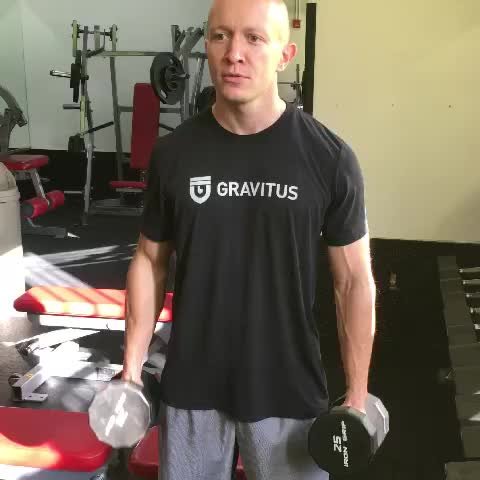
Log in to watch video demonstrations
Login to Watch3 video demonstrations available
Find more video demonstrations in the Gravitus app
Tips from the Community
-

some bloke took my weights and wasn’t even using them the little hoarder
-

Hit em wit the 30’s🤩
-

Chin him
-

Activate your core to stabilize. Your body will naturally try to use your back to lift the weights. Activating your core/having a strong core will help against this. Using your back can strain it. Your back should not hurt after doing this. In short: don’t cheat
-

dont cheat or use momentum
Track your progress with Gravitus
Download Gravitus to log your workouts, track your progress, and join a community of fitness enthusiasts.

Helpful Resources
One Rep Max Calculator
Find your one rep max for any exercise without maximal testing. Essential for developing effective strength training programs.
Calculate 1RMWorkout Programs
Follow structured workout programs created by fitness professionals to maximize your strength and muscle gains.
View Programs